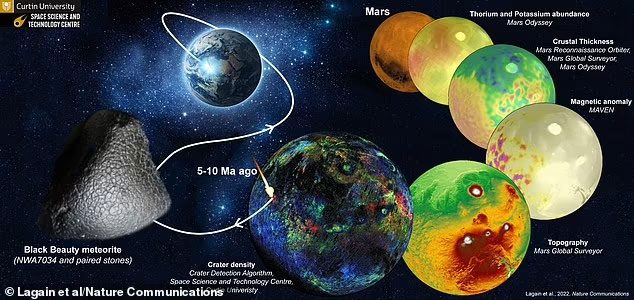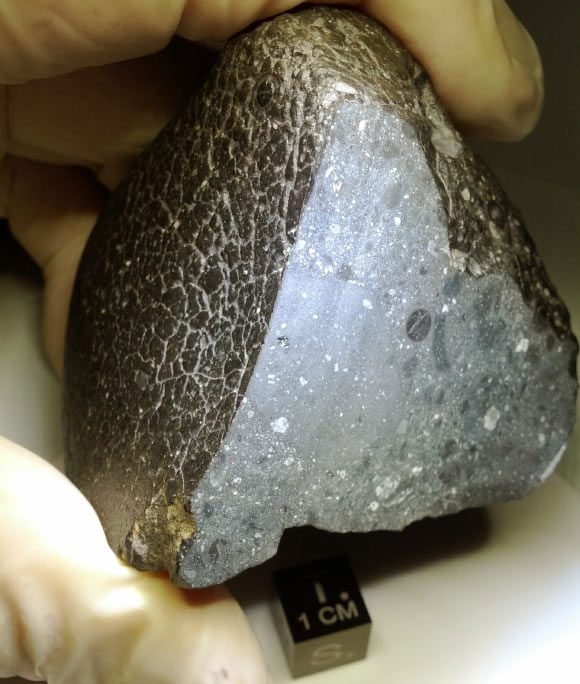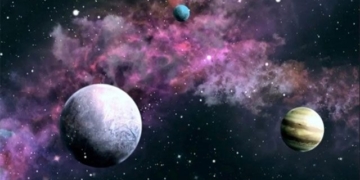According to research led by Dr. Anthony Lagain from the Space Science and Technology Centre at Curtin University in Australia, The Black Beauty – scientifically known as NWA 7034, weighing 320 grams, has recently been identified as being ejected from a volcanic vent in the northeastern region of Terra Cimmeria-Sirenum on the southern hemisphere of Mars.

Graphic depicting a glimpse into the history of The Black Beauty – (Image: CURTIN UNIVERSITY).
The Sci-News reported that scientists utilized supercomputers at the Pawsey Supercomputing Research Centre and Curtin HIVE to analyze a small fragment of The Black Beauty, comparing its composition with that of regions on Mars collected by NASA.
The results indicate that The Black Beauty is part of the volcanic ejecta from Khujirt volcano, formed approximately 1.5 billion years ago. It was later expelled into space through another eruption that created the Karrartha crater about 5-10 million years ago.

“Portrait” of The Black Beauty – (Image: NASA)
Due to its volcanic origins, The Black Beauty must have come from deep within Mars, where ancient crustal fragments have long sunk into the mantle and been “recycled.”
Subsequent research steps have confirmed that The Black Beauty is indeed a valuable planetary body from primordial Mars, specifically from the planet’s very old crust, approximately 4.53 billion years old.
This discovery has opened a significant “window” into Mars’ past and may also help us unravel mysteries about the early history of Earth, Mercury, and the Moon.
According to Professor Gretchen Benedix, also from the Space Science and Technology Centre at Curtin University, their research paves the way for an algorithm that will facilitate the identification of Martian meteorite locations, thereby enhancing our understanding of the geological history of this Earth-adjacent planet.
The research was recently published in the scientific journal Nature Communications.





















































